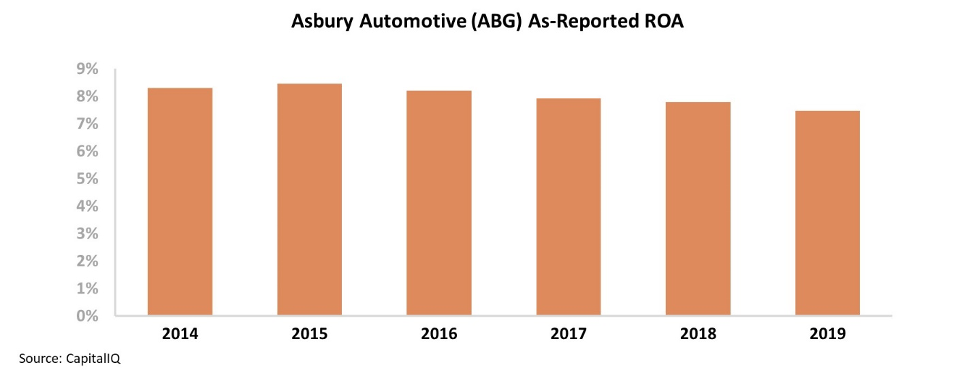 Clear communication requires a clear intent...
Clear communication requires a clear intent...
Every week on our all-hands call, our global teams highlight something they've been working on that's relevant to the entire firm.
The good updates are full of metrics and show how the project led to a higher performance in something specific and measurable.
The better updates also make a clear connection between the team's initiative and the fulfillment of an otherwise unmet client need... whether that's an external client or an internal client, for our supporting departments.
But the best updates are ones that accomplish the above, while also making a positive difference in the work (and sometimes personal) lives of the rest of the firm. With more than 120 professionals, the weekly updates are designed to help us cross-pollinate our best efforts and practices.
That's why I ask teams to ensure that their updates focus on an important takeaway for the rest of us – and that each person actively listens and thinks about how they could use that information to better our company and their colleagues.
We challenge the team leads to think through their weekly update and ask themselves, "So what? Why does this matter to our clients and to our co-workers? What's the call to action?"
That last question raises one of the most important factors for great business communications of all kinds: What's the best reasonable action? What will a listener feel compelled to actually "do" because they had the benefit of having heard your words?
And on just a slightly more philosophical though still very practical level, "Why will this communication make a positive effect on my listener?"
The "best reasonable action" question is one that can dramatically change the value of that call, conversation, or speech.
Asking these questions help our employees to plan accordingly to get their best message across. It prevents the conversation from drifting away from its original intent.
Planning around the "best reasonable action" also helps us before we have calls with clients. With just a little planning around a call to "best reasonable action," the entire communication improves radically. That makes the intention of the communication more transparent, saves time for everyone, and leads to healthier ongoing discourse.
 The car-buying industry is in dire need of clear communication...
The car-buying industry is in dire need of clear communication...
It's rarely as simple as picking out a vehicle in the lot. Buying a car often involves stressful negotiations with an experienced salesperson.
This means that it's important to prepare for the best reasonable action as well as the "BATNA," or "best alternative to a negotiated agreement." In other words, if the negotiation reaches an impasse, how a buyer can pivot out of the deal.
For many people, car buying is more stressful than buying a house. Although houses are more expensive, homebuyers often feel more control – making the process far less dramatic.
On the other hand, car dealers have a variety of tactics designed to create a buying frenzy and pressure prospective buyers to make decisions on the spot.
It's vital that buyers have a fixed "walk away price." The goal of the dealer is to unsettle buyers enough that they never realize that they've crossed this point.
It's no surprise then that the stress of car buying has led to the emergence of alternatives. Some companies are removing the negotiating aspect, such as TrueCar (TRUE) and Carvana (CVNA). Both are online marketplaces for cars and allow for easy price comparison.
Another company working to ease the stress is Asbury Automotive (ABG), a luxury car dealership with 96 franchises and 80 dealerships.
Asbury sells over 20% of its cars completely online. It provides "one click" shopping, reducing the need for salespeople. Additionally, Asbury has apps that allow for booking appointments, renting cars, and a myriad of delivery options.
Asbury has turned the traditional car dealership model into one powered by user-friendly technology. By making life easier for customers, Asbury should see more transactions and servicing, which leads to improved returns for the business.
However, this hasn't been the case...
Looking at as-reported metrics, Asbury has average and declining returns at best. Its as-reported return on assets ("ROA") has slid lower since 2014 and stood at 7.5% last year. It would seem that differentiating from the typical underhanded sales tactics hasn't led to strong profitability.
 However, Asbury's lack of underhanded tactics isn't what's keeping it down...
However, Asbury's lack of underhanded tactics isn't what's keeping it down...
As-reported metrics are misrepresenting the company's performance.
Distortions in as-reported accounting – including the treatment of goodwill – mean Wall Street has missed Asbury's real profitability.
Asbury's Uniform ROA was 11% in 2019... and has been moving higher since 2014, not lower. Take a look...
Asbury has effectively used technology to remove barriers to purchasing a car. Customers are able to purchase fully online or compare prices before booking an in-person appointment. The company's online tools also make it easier for customers to book service appointments, increasing the odds Asbury keeps highly profitable service revenue.
Thanks to these efforts, Asbury has been able to increase its returns in an industry seeing minimal growth.
But without Uniform Accounting, investors likely see Asbury as a company with average and declining returns.
And looking ahead, as businesses increasingly go digital, Asbury is poised to benefit. The company was well-prepared to deal with coronavirus-related shutdowns compared to competitors. Asbury's efforts to make the call to action, BATNA, and car-buying stress easier should help it continue the trend of strong returns.
Regards,
Joel Litman
December 4, 2020



 Clear communication requires a clear intent...
Clear communication requires a clear intent...



